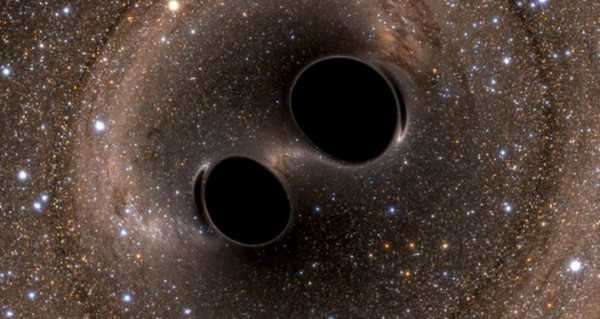
The universe is abuzz with activity generated by gravitational waves that ripple through the fabric of space-time, generated by binary mergers either between two black holes or two neutron stars.
Researchers have zoomed in on a signal from potentially the largest black hole merger detected in gravitational waves.
The findings, reported by an international LIGO and Virgo Collaboration of scientists, including researchers from the Institute for Gravitational Wave Astronomy at the University of Birmingham, were reported in Physical Review Letters and The Astrophysical Journal Letters.
The report states that the signal, designated GW190521, was observed on 21 May 2019 with the help of two instruments: the US National Science Foundation’s Laser Interferometer Gravitational-wave Observatory (LIGO), a pair of identical, 4-kilometer-long interferometers; and Virgo, a 3-kilometer-long detector in Italy.
The result of the merger marks the first distinct detection of an “intermediate-mass” black hole, with the brief signal lasting less than one-tenth of a second.
Researchers believe it was generated by a source that is approximately 5 gigaparsecs away, when the universe was about half its current age.
If that is correct, this signal makes it the most distant gravitational-wave source detected so far.
Resorting to computational and modeling tools, the team of scientists think that GW190521 was generated by a binary black hole merger, believed to be the most massive yet, involving two black holes with masses about 85 and 65 times the mass of the sun.

visual of gravitational waves from two converging black holes is depicted on a monitor behind Laser Interferometer Gravitational-Wave Observatory (LIGO) Co-Founder Kip Thorne as he speaks to members of the media following a news conference at the National Press Club in Washington, Thursday, Feb. 11, 2016
The result of the merger created an even more massive black hole, of about 142 solar masses.
The subsequently released energy, equivalent to about eight solar masses, took the form of gravitational waves, spreading across the universe.
The scientist compared the signal to LIGO’s first detection of gravitational waves in 2015.
All the black holes observed before this detected signal were either stellar-mass black holes, or supermassive black holes.

Data from NASA’s Chandra X-ray Observatory and ESA’s XMM-Newton uncovered the account that began with a red giant star wandering too close to a supermassive black hole in a galaxy about 250 million light years from Earth. The black hole, located in a galaxy called GSN 069, has a mass about 400,000 times that of the Sun, putting it on the small end of the scale for supermassive black holes.
What makes the GW190521 intriguing is that its final 142-solar-mass black hole is the first of its kind – an intermediate mass range between stellar-mass and supermassive black hole.
The ‘Wobbling’ Black Holes
The LIGO-Virgo team also discovered that if their assumptions were correct, and the signal was produced by the merger of two black holes, their spin axis was “misaligned” – not parallel to the orbital angular momentum.
Speaking of the astrophysical implications of the findings, Pedro Marronetti, program director for gravitational physics at the National Science Foundation, said:
Sourse: sputniknews.com






